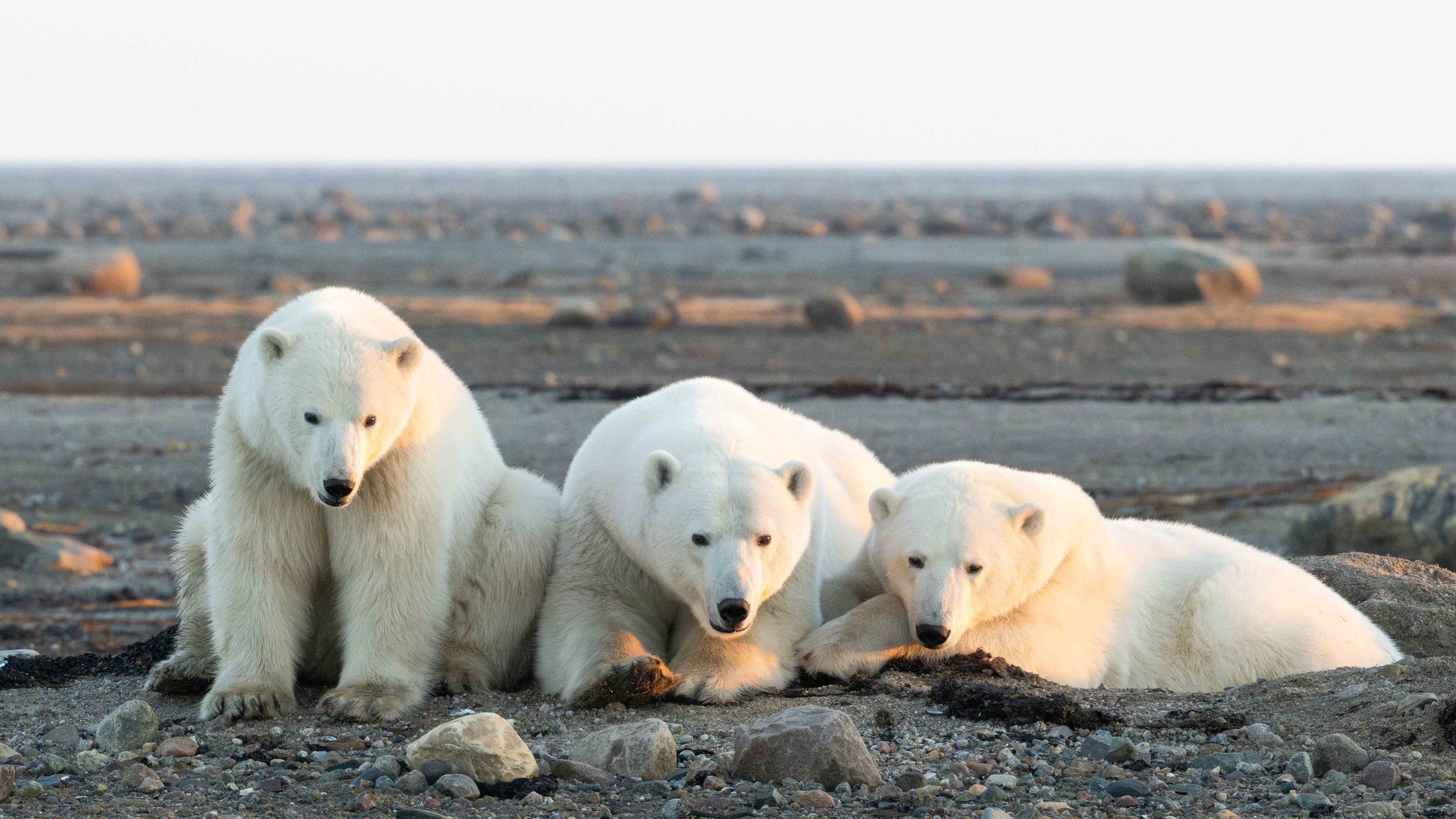
About Polar Bears.
Polar Bear Facts
-
Polar bears are found in the Arctic regions of Alaska, Canada, Greenland, Norway, and Russia.
-
Polar bears are the largest land carnivores, with adult males weighing between 900 to 1,600 pounds (410 to 720 kg).
-
Polar bears have the thickest fur of any bear species and it’s composed of two layers.
The layer closest to the body (the undercoat) is thick, plush hair that retains heat.
The outer layer is not actually hair but clear, hollow tubes which trap air for insulation. The tubes also reflect light, which makes the fur look white and thus helps them blend into their surroundings.
Polar bears have small ears and a short tail, which helps minimise heat loss in their Arctic environment.
-
Polar bears have black skin, which helps them absorb heat from the sun.
-
Polar bears have an incredibly keen sense of smell, which helps them detect seals from miles away.
-
Polar bears are apex predators in their Arctic ecosystem and primarily feed on seals, especially ringed and bearded seals, which they hunt primarily on sea ice.
They use their keen sense of smell to detect seals' breathing holes in the ice and ambush them when they surface.
-
Polar bears are excellent swimmers and can cover long distances in search of food or suitable habitat. They can swim at speeds of up to 6 miles per hour (10 kilometres per hour) and dive underwater for several minutes to catch seals.
-
Female polar bears give birth to one to three cubs in a den made of snow and ice.
Cubs are born between November and January, weighing only about 1-2 pounds (0.5-1 kg) at birth.
Polar bear mothers are fiercely protective of their cubs and will defend them against any perceived threats, including other bears and humans.
When cubs are in danger the mothers exhibit remarkable courage and aggression.
Polar bear mothers raise their cubs alone, males do not participate in cub rearing. They must provide for and protect their young in one of the harshest environments on Earth, demonstrating remarkable resilience and adaptability.
Female polar bears exhibit delayed implantation, also known as embryonic diapause. After mating, the fertilised egg does not immediately implant in the uterus. Instead, it remains in a suspended state until conditions are optimal for the female to give birth.
-
Adult polar bears have no natural predators except other polar bears.
-
In the wild, polar bears can live up to 25 years, although many do not reach this age due to harsh conditions and food scarcity.
Polar Bear Habitat
Nunavut, a territory in northern Canada, encompasses a significant portion of the Arctic region and is home to a diverse array of wildlife, including the iconic polar bear. Here's an overview of the polar bear habitat in Nunavut:
-
Sea ice is vital for polar bears as it serves as both a platform for hunting seals, their primary prey, and as a means of transportation. In Nunavut, polar bears rely heavily on the sea ice of the Arctic Ocean and adjacent seas for hunting and movement.
-
Pack ice - large pieces of floating sea ice and fast ice - ice attached to the coastline, provide essential habitats for polar bears. These areas offer platforms for hunting seals and resting between hunts.
-
Polar bears in Nunavut exhibit seasonal migration patterns, following the movements of sea ice as it expands and contracts throughout the year. They often travel long distances over the ice in search of food and suitable habitat.
-
Female polar bears in Nunavut select remote locations, often along the coast or on islands, to build dens in the winter months. These dens provide shelter for mother bears and their cubs during the birthing and early rearing period.
-
The marine ecosystems surrounding Nunavut support a diverse array of wildlife, including seals, which are the primary prey of polar bears. The nutrient-rich waters of the Arctic Ocean sustain the entire food chain upon which polar bears depend.
-
Like other Arctic regions, Nunavut is experiencing environmental changes due to climate change. The reduction of sea ice and alterations in ice dynamics are impacting polar bear habitat and hunting patterns, posing significant challenges to their long-term survival.










